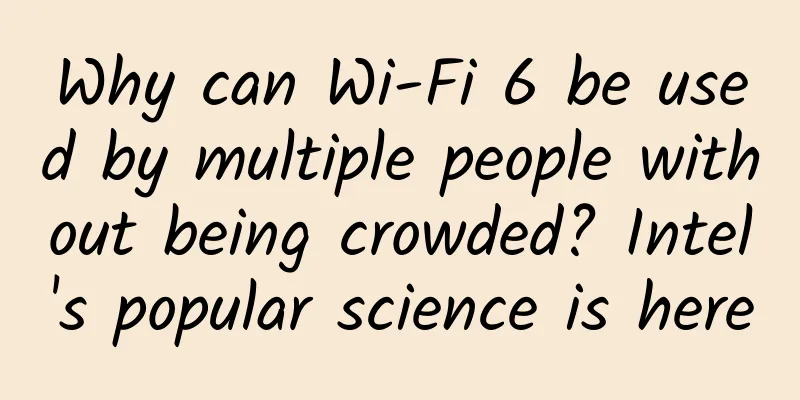The ultimate form of 5G and its ferryman

|
Recently, I found that many of my friends have suffered from "New Year's Eve chat anxiety" and listed "modern Spring Festival etiquette" such as not asking children about homework, not asking unmarried people about their partners, and not asking adults about the stock market. Since it's awkward to talk about anything else, why not talk about 5G? “With 5G in hand, the world is mine” can not only answer the hard-core questions of my second uncle such as “What does 5G mean to China”, but also help my seventh aunt solve the confusion of shopping such as “Can I buy the newly released 5G mobile phone”. It is a must-have artifact for New Year greetings that is suitable for both men and women, young and old, and makes everyone happy. Indeed, 5G is like a kaleidoscope of the future world. Even if it is only the beginning of the entire ecosystem, everyone can get a glimpse of a corner that surprises them. From a technical logic perspective, we can sense the possible appearance of 5G life. But from a practical perspective, we still have to start from laying the foundation and connecting water and electricity to produce the killer applications we expect. Today we will talk about the construction plan of the 5G core network, allowing you to become a technical expert and carry the entire topic. Why are there so many pitfalls in 5G networking? Before we start analyzing various networking solutions, it is necessary to talk about the uniqueness of 5G networking: First of all, the number of new base stations required is huge and very expensive. The coverage radius of a traditional 2G base station is two kilometers, while the coverage radius of a 5G base station is only about 500 meters. Therefore, in order to allow everyone to access the 5G network anytime and anywhere, more base stations need to be built. It is said that the number of 5G base stations in the future will be twice that of 4G base stations, but the cost of a 5G base station is more than 1.5 times that of 4G, which is like a money-smashing demon. Secondly, the technical requirements of 5G networks are high, and many difficulties have yet to be overcome. Technologies such as millimeter waves, small base stations, massive MIMO, ultra-dense networking, and beamforming involved in 5G are not yet mature, and rigid requirements such as transmission rate, node collaboration, and anti-interference need to be addressed. More importantly, 5G is not enough to just build a good network, but needs a whole set of supporting facilities to really work. For example, 5G requires 5G chips, but no manufacturer has released 5G chips yet. 5G networks also require licenses, and domestic licenses have not yet been issued. In addition, the development of 5G-based applications also takes time to polish and complete. It is not difficult to see from this information that the construction demand for 5G network is imminent, but its complexity and difficulty determine that no operator dares to go all out for a complete renewal. Therefore, it is certain that the progress is slower than expected. In such an environment, various fancy networking solutions have emerged, which confuse people. For example, the US operator AT&T introduced 5G base stations in 2018 based on the existing 4G core network and 4G base stations; in 2020, it will upgrade to the 5G core network, and migrate 4G and 5G base stations to the 5G core network; and achieve full 5G coverage in 2022. Huawei's 5G timetable has already launched a full set of 5G commercial network solutions based on non-standalone networking (NSA) last year, and will launch a 5G commercial system based on standalone networking (SA) in March this year. 5G chips have also been arranged and are expected to be available this year. The three major domestic operators are also advancing the pace of 5G construction in an orderly manner. China Telecom's 5G network evolution strategy is that 4G and 5G networks will coexist for a long time. In the future, its existing fixed-line resources will be connected with mobile networks to achieve interoperability between fiber optic cables and 5G. In short, every plan that comes out is very touching. Haters hold microscopes and write ten thousand-word essays, while fans can spray out thousands of miles of rainbows in one breath. In the noise of eating melons, the public and the industry are full of endless expectations for 5G. And the transition plan that clings to 4G is so unimpressive. I even changed to a (fake) 5G phone, and you still want me to use 4G? Why can’t we launch 5G directly? This requires us to sort out two different networking methods. What is the difference between NSA and SA networking solutions? Although it seems that there are many different schools of thought, there are actually only two types of 5G networking solutions: standalone networking (SA) and non-standalone networking (NSA). Standalone (SA) networking is exactly what it sounds like. A brand new 5G core network and brand new 5G base stations (including enhanced 4G base stations) are like a highway built specifically for 5G applications. Exclusive and dedicated, it sounds great. Of course, for operators, it is even more fun to spend money on construction and maintenance. As for non-independent networking (NSA), it is too slow to build everything by yourself, and by the time it is completed, the users will all belong to other companies. If you want to start 5G now, you have to introduce external assistance and borrow the existing 4G core network and base stations to cover the hotspots first. As for the specific methods, there are many kinds, which are nothing more than the permutations and combinations between 4G and 5G, core network and base stations. The most mainstream 3-series networking method is based on the 4G core network, which operates through the 4G core network + 4G base station, or 4G core network + 5G base station. When facing terminal requests, 4G is used if it can be handled by the 4G base station, and 5G is used if it cannot be handled. In this way, only 4G base stations need to be upgraded and a small number of 5G base stations need to be built, so that users can quickly use 5G, which greatly reduces deployment time and seizes users in advance. It is also the most popular solution for operators. Other NSAs include the 7-series solution, which uses 5G in the core network and connects 4G and 5G base stations at the same time; and the 4-series solution, which also uses 5G in the core network but mainly uses 5G base stations and supplemented by 4G base stations. Therefore, the reason why non-independent networking NSA appears in the transition period is that its value is mainly reflected in several aspects:
Independent networking is inevitable: 5G infrastructure with inherent HARD mode At this point, some students may ask: Since mixed use is economical and affordable, why do people still spend money on independent networking? This has to do with the limitations of the 4G network. Since the coverage of the 4G millimeter wave frequency band is small, it is difficult to form continuous coverage, and the initial rate is not very high, so it is only suitable for the early preparation stage when the user scale and data demand are not large. More importantly, the 5G ecosystem is fundamentally different from 4G. If you want to truly enjoy the fruits of 5G, full 5G must rely on independent networking to complete network information services. So, what are the benefits of independent networking? 1. Higher transmission efficiency. For example, eMBB enhanced mobile broadband determines whether the mobile phone download speed is fast, whether the game and video are stuck, and whether the high-speed rail can be connected to the Internet; uRLLC high reliability and low latency connection determines whether the autonomous driving response is fast enough, whether the remote surgery guidance is accurate and timely enough, whether the industrial control is accurate, etc. In short, these applications require ultra-high data transmission efficiency to support them. 2. Lower connection threshold. In the NSA deployment mode, the terminal equipment needs to support 4G/5G dual links at the same time, which may lead to high RF costs and high power consumption. In independent networking, 5G terminals do not need to access the 4G network at the same time, so the terminal is relatively low in cost and more energy-efficient. For smart cities, smart homes, environmental monitoring and other businesses that require massive smart IoT terminal devices to support, the coverage frequency and integration depth of the Internet of Everything can be achieved at low cost, low energy consumption and high reliability. 3. Higher deployment freedom. Adopting the NSA transition solution can certainly reduce the deployment cost of 5G for a period of time and seize coverage and hot spots, but it still requires "looking at people's faces". Since 4G and 5G equipment must be from the same manufacturer, there may be insufficient room for bargaining in equipment procurement, and regional distribution will also be subject to certain restrictions. For example, many data services are mainly distributed in crowded indoor places, which requires ultra-dense networking to improve the reuse of space, which is almost impossible for 4G base stations. In short, although independent networking is relatively expensive, it can support the foundation of 5G. If the source of 5G infrastructure is ignored, the lifeline of user experience will be built on quicksand, which will collapse instantly once the traffic tide comes. Of course, independent networking is only the ultimate form of 5G construction. It took China about six years to transition from the 3G to the 4G era, and the transition from 4G to 5G is an even longer system project. If we look at it from a pragmatic point of view, we will find that NSA non-independent networking is an excellent ferryman, ferrying the technological achievements and new ideas accumulated on the industrial side to the other side first, and creating a model of 5G life in the existing environment. More companies can take this opportunity to reserve technical patents, polish products and resources, so that when the industry matures in the future, they will have a trump card. |
<<: Deutsche Telekom warns: Banning Huawei will hinder Europe's 5G development
>>: Popular understanding of the seven-layer network protocol
Recommend
Global 5G War: New Progress of Foreign Operators
2020 was supposed to be the year 5G went global, ...
How do the three major operators promote cloud-network integration?
In recent years, with the rapid development of cl...
Xunfang and Huawei join hands to enter the era of big service 2.0, four key words to achieve consistent service experience
[51CTO.com original article] On a weekend in earl...
PIGYun Mid-Autumn Festival Special Offer: Hong Kong/Korea VPS monthly payment starts from 14 yuan
PIGYun has released a special promotion for Septe...
Report: Global mobile broadband coverage reaches 95%
The majority of the world’s population – 95% – is...
China's digital economy reaches a turning point from big to strong
[[396176]] On April 25, the Cyberspace Administra...
CUBECLOUD VPS 12% off: Hong Kong CN2 GIA monthly payment starts from 69 yuan, Los Angeles CN2 GIA line monthly payment starts from 60 yuan/month
CUBECLOUD (Magic Cube Cloud) has sent a promotion...
Seven steps to easy network segmentation
Network segmentation is a network security tool t...
Working together to develop and forge ahead, Fuqianla officially released its 2018 strategic plan
On December 12, Fuqianla, an Internet financial c...
Communication Protocol I2C Subsystem I2C Driver
Now let's write the I2C Driver part. The I2C ...
A complete guide to the development of TCP/IP
[[415786]] In the late 1950s, during the Cold War...
80VPS: Hong Kong/Japan/Korea/USA 1-16C cluster server starting from 800 yuan/month
A friend talked about cluster servers. I recently...
The need for SD-WAN in a multi-cloud world
With the advent of a multi-cloud world, software-...
The key role of optical transceivers in passive optical network technology
Passive Optical Network (PON) technology has beco...
Research on automatic identification and optimization of network structure problems and joint analysis of tower resource merger
Author: Han Binjie and Liu Hongxing, unit: Hebei ...









